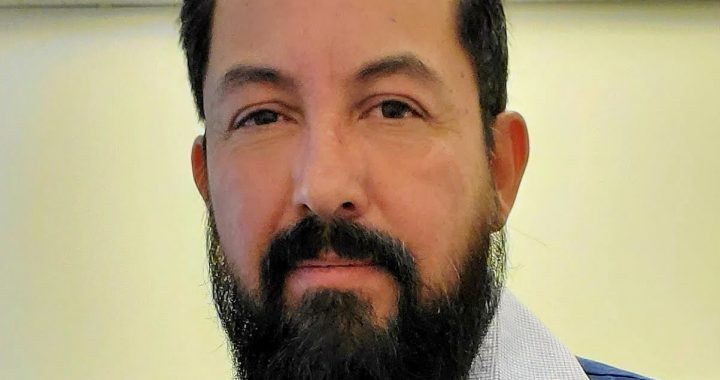“Sustainability: Rhetoric vs. Reality”
How do we address rhetoric like ‘meat is murder’, ‘we need to rewild cattle’, ‘the beef industry is causing climate change’? These were the thorny questions raised and addressed at the BIF Symposium 2022 ’s opening discussion on “Sustainability: Rhetoric vs. Reality” with presentations by Ruaraidh Petre, of the Global Roundtable for Sustainable Beef; John Crowley, AbacusBio in Canada ; and Jason Sawyer, of the King Ranch Institute for Ranch Management at Texas A&M University–Kingsville.
Beef industries globally are being used as a scapegoat by people like Richard Branson, Oprah and David Suzuki. The reality is that beef demand remains strong, globally. However, inflation and global volatility is impacting production costs significantly. Reality is that consumers want to eat beef. They just want the assurance that it’s ok to do so.
Because it is not in our nature to communicate well about the great things that we do in raising beef and protecting the environment, we need to support agencies like the Global Round Table for Sustainable Beef and the Canadian Round Table for Sustainable Beef to help us. The communication needs to include GHG emissions from inefficient systems, such as long periods under poor nutrition and management, and poor land conversion practices (e.g., deforestation to grow soybean and then graze cattle). In reality, our emission intensity in North America is low (relative to what?; milk, plant-based protein?; certainly lower relative to young cattle in South America that are kept on pastures for long periods of time and then slaughtered at 36-38 months of age)—but we should still be part of the solution. Solutions discussed ranged from fitting environmental impacts into economic selection indexes, through improving production efficiencies through selection for traits such as weight at days-to-finish, feed efficiency, methane emissions , and fertility with the goal being nature-positive beef production / carbon neutrality .
Carbon neutrality can only be a measure and an objective if calculated accurately and objectively. So far, calculations of the global impact from beef production do not consider the tremendous variation between countries, intensity, production systems, gross emissions versus emission intensity (i.e. per amount of product), and warming impacts versus carbon impacts. The measuring stick has to be correct first.
Having said that, improving production efficiencies through management and genetic selection can be a lower-cost way to reduce GHG emissions and assist producers reduce the resources needed per unit of produce. Gentec researchers have been working on this for many years (feed efficiency, reducing age at slaughter, McDonald’s pilot project, increased herd-level hybrid vigour through genomic indicators of heterosis, more accurate breeding values using genomics, grazing practices to improve carbon sequestration).
Another solution discussed at BIF is fitting the genetics to the environment. If you’ve ever heard the term G by E (GxE) interactions, it refers to differences in genetic expression in different environments. It’s a source of frustration for animal-breeding geneticists as well as producers because it means that one size does NOT fit all. A selection index, for example, developed for use across a country or even a continent isn’t going to work the same way in each environmental pocket. Strong evidence suggests that using a generalized index is still significantly more effective than basing selection decisions only on phenotypic appearance, raw performance information or EPDs for one or a few traits.
Personally, I see GxE interactions as an opportunity. There’s a very good home for different types of cattle and genetics . Notably, Gentec is working on GxE in its BCRC Fertility DMI project (winter grazing vs confined feeding) though the number of animals and environment must be increased dramatically to obtain meaningful results. It’s a start. The key is to pair the right type with your environment (a theme explored in the forthcoming Field Day at the University of Alberta Kinsella ranch). GxE interactions are good to be aware of, and if you’re interested in playing with a customized index based on your specific breeding targets, market drivers and inputs, then Matt Spangler and Bruce Golden have developed an app that will be available through the BIF website (stay tuned for the release of IGENDEC ).
Discussion on ‘one size doesn’t fit all environments’ led into significant discussion about the need for different genetics based increasingly on use – CED (calving ease) emphasis really should vary based on current dystocia levels and the breeding herd (size, breed, heifers versus cows). Producers are also going to want to vary genetics based on different selling markets (are you selling weaned calves, breeding heifers, breeding bulls, boxed beef?). One market that has grown significantly and has specific genetic requirements is the beef-on-dairy market. This gives dairy producers the opportunity to change profitability from females that might be great milk producers but not the top 30%. Genetics from the beef industry can facilitate improvements in muscling, average daily gain and feed efficiency. The dairy industry is responding to this trend by moving its focus from putting selection pressure on calving ease. Instead, dairy producers are measuring pelvic size and moving females to handle a better-muscled calf. Dairy producers identified an opportunity to increase profitability, and are using genomics technology to help them adapt their herd to maximize this. In collaboration with Semex, Herdtrax by Telus Agriculture and other industry partners, Gentec’s John Basarab and co-researchers have been funded by RDAR and Genome Alberta to conduct a small-scale project on validation and deployment of a feeder profit index for beef-on-dairy feeders. They plan to expand this through proposals to initiatives such as Genome Canada’s recently-announced Climate Action Genomics Initiative.
Advances in genetic evaluations assist producers in addressing some of the requirements for diverse genetics. Heart scores are being collected to develop genetic selection tools for animals that are better equipped to finish at higher altitudes, and to finish in feedlots at low or moderate elevations without incidence of heart disease. Another example discussed is incorporating traits that impact environmental sustainability into genetic selection indexes, and the challenges (but also successes) involved with across-breed and across-country genetic evaluations. These will ultimately provide beef producers globally with robust genetic selection tools with which to address global challenges and opportunities associated with beef production.
“Global Perspectives on Adaptation and Genetic Prediction”
Our second day at BIF 2022 was launched by a general session on “Global Perspectives on Adaptation and Genetic Prediction.” Speakers included Tony Clayton, president of Clayton Agri-Marketing; and Phil George, Miratorg Agribusiness Holding production director, beef & lamb operations, Moscow, Russia.
I strongly recommend that you watch these presentations (links below). I can’t articulate the magnitude of the export projects that these two gentlemen are working on. We’re not talking about exporting a ewe, a goat, and two cows to some remote country. We’re talking about export projects where 300,000 head of cattle get exported to Russia to populate a complete integrated system from propagation of a genetic nucleus, commercial multiplication and management of these genetics to point-of-sale with data collected every step of the way. And those data are being used to validate which of the initial imported US genetics actually worked.
If you’re on the fence about EPDs, know that these people don’t make purchasing or breeding decisions without them. They’ve also learnt, Phil George will attest, that best-quality genetics result in better outcomes all the way down the production chain. I’m still reeling from their use of technology and the amount of data they collect throughout their integrated production.
Both men talked about the huge global market potentials for U.S. beef genetics. If you’re a Canadian beef producer talking to someone who can lobby for Canadian beef exports, we need to be more competitive in the global export market. And we need access. We need to market Canadian beef genetics to places like China. Pakistan and Vietnam were the biggest importers of beef genetics last year. And Canadian beef genetics need to be described by EPDs because that’s what global buyers are considering when making large-scale buying decisions.
This piece gives you a brief flavour of the discussions that happen at the Beef Improvement Federation annual symposium but is by no means inclusive of all the sessions that were offered. All the sessions are recorded and available for viewing. For more information on BIF and the BIF Symposium, visit beefimprovement.org. The BIF 2023 Symposium will be in Calgary, AB on July 3 – 6. Please join us for what is going to be a stellar event.
Kajal Devani
Director of Science and Technology, Canadian Angus Association
NOTE
If these talks sounded interesting to you, you might consider “saving the date” for BIF 2023









